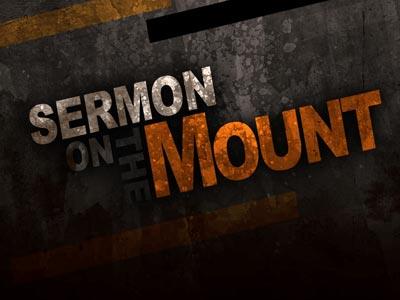-
Is Jesus An Alien From Another Planet? (Luke 9:28-36)
Contributed by David Smith on Nov 2, 2007 (message contributor)
Summary: Transfiguration: we struggle. We are weary. There is much we do not understand. And yet every now and then we catch a glimpse of the strange and glorious nature of Jesus, an...
Yes, it’s the story of the transfiguration - my least favourite Gospel story.
When I realised the transfiguration was scheduled for this week, I tried to get out of it. I thought about other people I could ask to preach ... but I couldn’t come up with anybody.
Then I remembered that the transfiguration readings were one of two sets of readings that could be used this week, and I found that the alternate set included a Gospel reading where Jesus speaks of "loving our enemies and praying for those who persecute us" - powerful stuff! This seemed far better.
Then I asked myself, "why am I shying away from the transfiguration"?
Well ... because I find it hard to relate to. Because it does nothing for me. Indeed, I must admit that I find it somewhat alienating. The Jesus of the transfiguration is not the Jesus I am used to. The Jesus of the transfiguration appears to be something like a character out of a ’close encounters’ type of movie - a strange, glowing figure, who moves around in clouds and dialogues with long-dead figures from the past. This is not the Jesus I am familiar with. I don’t feel particularly comfortable with the transfigured Jesus.
Then it occurred to me that if what was putting me off the story of the transfiguration was that I didn’t feel comfortable with its depiction of Jesus, then maybe I had become a little too comfortable with Him.
If you’re familiar with the church growth movement, and with the whole way our Anglican diocese is going, a great deal of effort nowadays is being poured into presenting the church as a more user-friendly environment.
The big push to get rid of clerical robes and traditional church architecture has its roots in the idea that mainstream religion is alienating for modern people. If only the church could look more like your living room! If only the music sounded more like what people are used to. If only the preacher looked more like your dad.
I must admit that I was somewhat surprised last week, attending the funeral service of a friend and fellow priest, to find both our bishop and Archbishop leading the service in suit and tie! I suppose it was really more of a memorial service than a funeral as such, as the body of our beloved friend was not present. Even so, it was a stunning reminder of how far our church has gone in attempting to blend in with the current culture, even if the suit and tie is more the uniform of corporate Australia than it is of any culture I identify with.
At any rate, we recognise that the goal is to blend in. We don’t want the priest looking like some creature from another planet. Indeed, we don’t want him looking like a priest at all. Let’s give him more the look of your friendly classroom teacher, and let’s give the building more of a coffee shop atmosphere. And let’s do our best to present Jesus as a true-blue Aussie bloke (albeit, with a well-tailored suit) moving around the offices authoritatively, with a gentle smile and a firm handshake.
I’m conscious of the fact that the people who built our church building here were not thinking along the lines of trying to blend in. Our church building does not look like your living room because it was never intended to. Our organ belts out tunes that sound nothing like what you hear on your stereo. These pews on which we sit were, as we all know, not designed for comfort!
What was it that the people who constructed this building were thinking of? They seemed to have a sense of space, didn’t they. Our church ceiling must be at least ten times the height of the average ceiling. People who meet in this building are evidently on about something big!
And look a the windows that let the light in, in multi-coloured streams! They are constructed as pictures of great figures from the past. They speak of a history to which we are connected - a colourful and dramatic history, full of figures we won’t necessarily recognise, erected in memory of persons we no longer know.
And look at the way the church architecture is designed to have everybody focused up the front. If we were doing it nowadays, according to the current trend, we might use lounge chairs set at odd angles, or most likely arranged in a circle where we could more easily engage with one another. This was not what our forefathers and foremothers had in mind, was it?
The pattern we have in our church building is one where everybody is being directed towards something that’s going on up the front. Even the person leading the service is off to one side. Where we are being directed is rather to this book here - the Bible - and to this table, where we break bread and pour out wine!

 Sermon Central
Sermon Central



